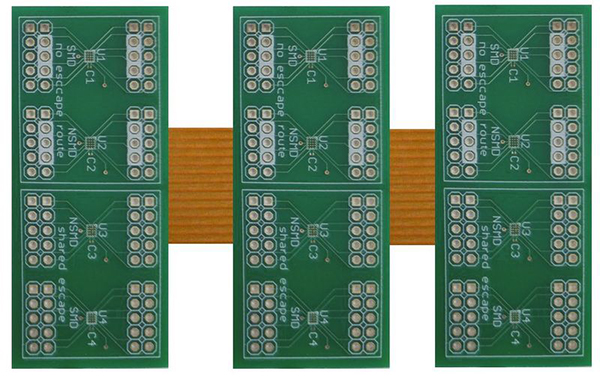Fiducials and Odd Boards

Not all boards need fiducials, but they do come in handy on challenging boards.
One of the handy aspects of getting boards assembled at Screaming Circuits is we don’t require fiducial marks for standard process boards. I would say we build far more boards without fiducials than with.
That’s cool, but sometimes fiducials really are a good idea. In fact, if you’ve got room on the PCB, they’re always a good idea. (Just because something isn’t required doesn’t mean it’s not a good idea.)
Some boards are more in need of the marks than others. For example, not long ago, we got a rigid-flex board in. It had three separate rigid boards connected by flex, designed to be folded into a stack. It looked similar to the mockup in FIGURE 1.

Figure 1. Three separate rigid boards connected by flex and designed to be folded into a stack.
The boards didn’t have any fiducial marks. Normally, we find a via hole, through-hole pin hole or some similar feature to use as a fiducial. That usually works, but not always.
In this case, the length of the flex varied slightly from board to board. The PCB color was also very low contrast, which made it difficult for the machine to consistently recognize any mark we picked. That meant our machines had a hard time finding the “home” spot, and we had to reset for each of the connected boards. Finding a spot on one board did not guarantee we’d know where to place parts on the other two boards in the set.
In this case, it would have been far better if the boards were a consistent distance apart, and if each of the three boards had a set of fiducial marks.
What makes a good fidicual?
Most CAD packages have fiducial marks in their components library. Basically, it needs to be a metal dot surrounded by an area without any copper or solder mask. More than one is best. It should be an asymmetrical pattern that can only be oriented one way.
is marketing manager at Screaming Circuits (screamingcircuits.com); This email address is being protected from spambots. You need JavaScript enabled to view it..




